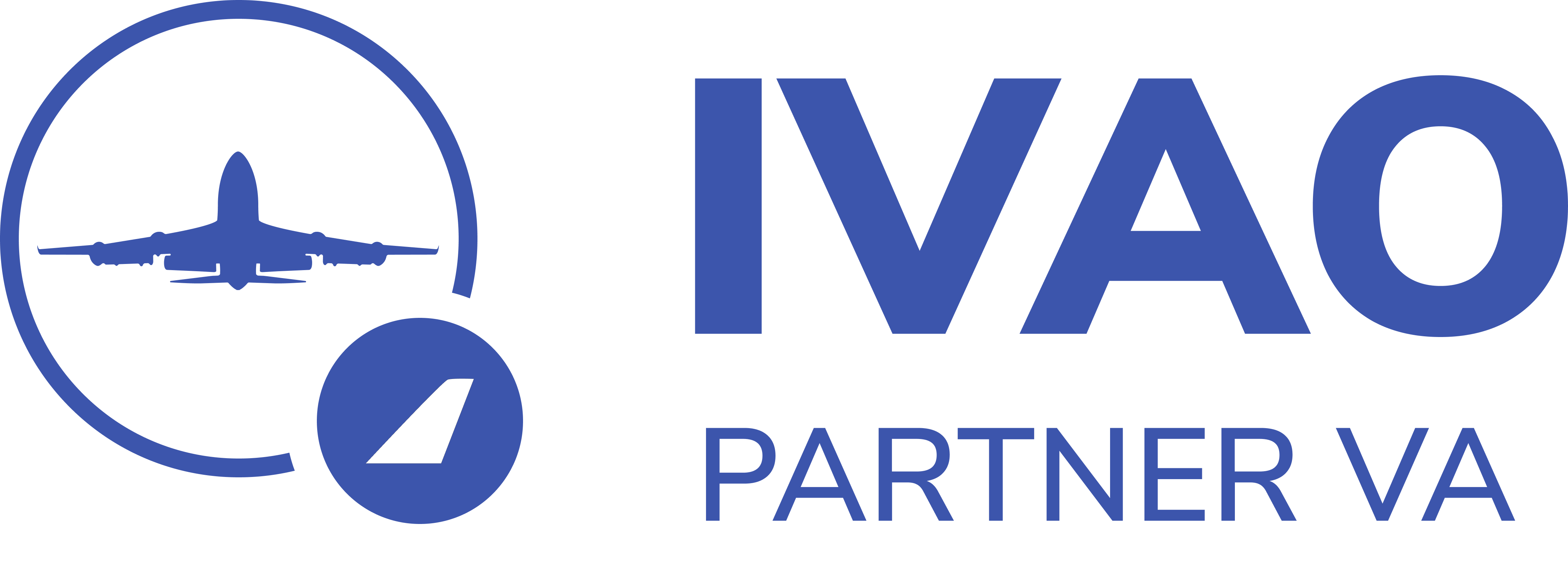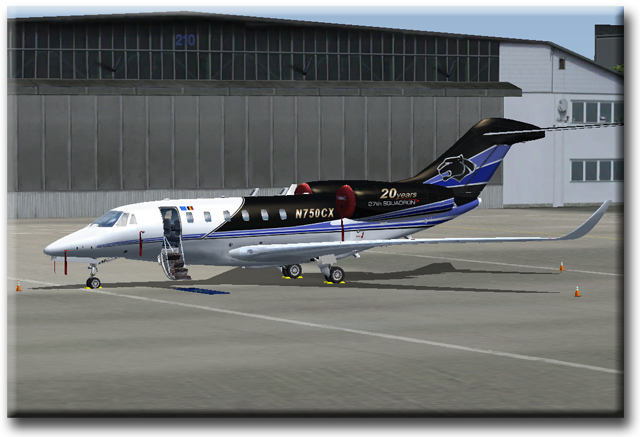Republic F-84 F Thunderstreak
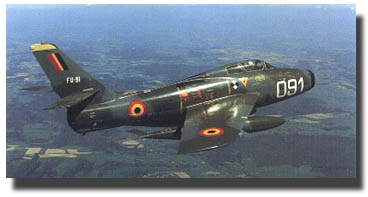 The Korean war taught NATO the Thunderjets were no match for the latest planes of the Eastern Block. So all countries are seeking to get a more powerful aircraft. This aircraft should be able to carry a larger load and reach a speed between 800 and 900 km/u at low altitudes.
The Korean war taught NATO the Thunderjets were no match for the latest planes of the Eastern Block. So all countries are seeking to get a more powerful aircraft. This aircraft should be able to carry a larger load and reach a speed between 800 and 900 km/u at low altitudes.
The NATO countries choose the Republic F-84F Thunderstreak.
These aircraft are delivered under the same MDAP agreement as the Thunderjets before. August 17, 1955 the first two ‘Streaks’ touch down at Florennes and are assigned to the 3rd Squadron. This is the first swept wing aircraft and the fastest in our Air Force to date. It is also the first aircraft in the Air Force able to surpass the sound barrier, albeit in a steep dive. The 10th Wing receives her ‘Streaks’ as of June 1956.
The Belgian Air Force receives 197 Thunderstreaks (codes FU-1 through FU-197).
A F-84F of the 2nd Squadron, 2nd Wing, Florennes
Technical Specifications
Republic F-84F Thunderstreak
| Span | 10,24 m |
| Lengthe | 13,23 m |
| Height | 4,37 m |
| Engine | Wright J-65-W-3 with 3275 kg thrust |
| Maximum speed | 1.220 Km/u - 659 Kts |
| Ceiling | 16.250 m - 53.314 ft |
| Range | 1.600 km - 864 Nm (with 2 aux. tanks) |
| Weight | 12.679 kg - 27.952 Lbs |
| Armament | 4 Browning .50 machine guns in the nose, 12 unguided air-to-ground rockets, bombs and rockets to a weight of 4.020kg. |
Color Scheme's
The F-84F’s are bare metal bearing black USAF registrations at arrival. Some have red tails, rear fuselage and wingtips. The aircraft remain bare metal but receive Belgian cockade’s on fuselage and wings, black registration numbers on the tail and black squadron codes on the nose. Only the olive drab anti glare panel in front of the cockpit and the black panel behind the cockpit remain untouched. Most of the aircraft are decorated with squadron colors on the nose and sometimes also the rudder and wingtips.
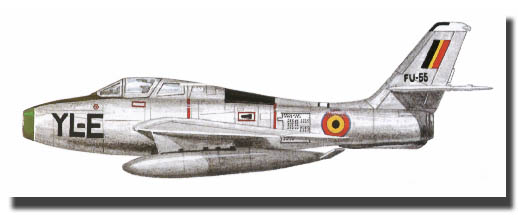
F-84F Thunderstreak, 3rd Squadron, 2nd Wing, Florennes 1955
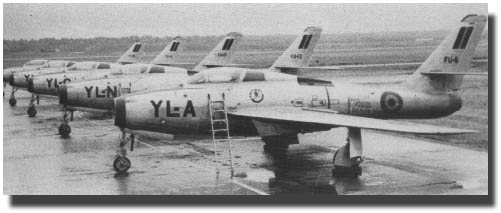
Starting 1957, NATO adopts a camouflage color scheme and soon our ‘Streaks’ are painted grey/green on top and PRU blue underneath. The squadron codes remain but are painted white. The squadron colors on rudder, wingtips and nose are re-applied.
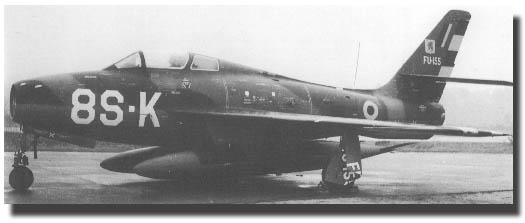
F-84F Thunderstreak, 31st Squadron, 10th Wing, Kleine-Brogel 1957
Prior to 1962 the aircraft belong to a particular squadron. Each squadron has its own technicians and support personnel. This way they can deploy as a contained unit to an auxiliary airfield in case of war and operate totally independent from the rest of the Wing. Needless to say this is a costly business. So as of 1962 the Air Force decides to centralize the maintenance. This means the aircraft now belong to the Wing’s centralized maintenance and are assigned to squadron flights when needed. Because of this decision the squadron codes disappear and replaced by a large version of the registration number. In the 10th Wing the rudders and wingtips are decorated with the colors of all three squadrons. After a while one or another ‘illegal’ squadron badge appears on the aircraft.
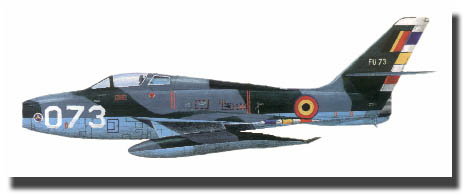
F-84F Thunderstreak, 10th Wing, with 31 'Tiger' badge,
Kleine-Brogel 1962
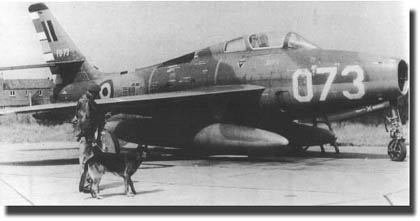
As the first F-104G Starfighters are delivered, the ‘Streaks’ are transferred to Florennes. The last Thunderstreak leaves Kleine-Brogel April 6, 1966.
The same time the Starfighters are repainted in the newly adopted ‘Vietnam camouflage’ in July 1967, the Thunderstreaks in Florennes are also repainted. The large white registration numbers disappear and are replaced by smaller ones. The Thunderstreak remains in service at Florennes until 1971.
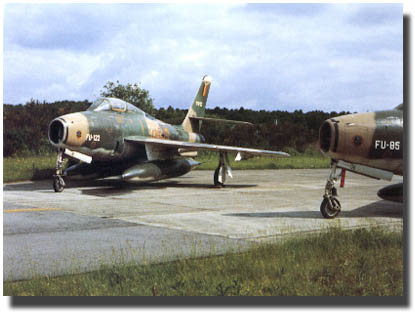
F-84F Thunderstreak, 1st Squadron, 2nd Wing, Florennes1970
 NL
NL  EN
EN 
